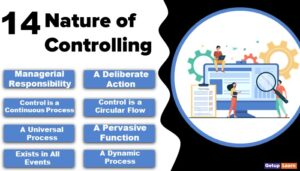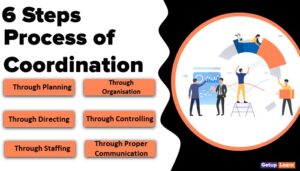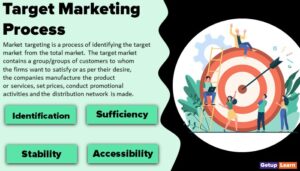Table of Contents
What is a Project?
A project is a piece of planned work or an activity that is finished over a period of time and intended to achieve a particular purpose.
The ultimate aim of any business project is to gather the resources and utilize them optimally, making things socially viable and thereby earning the business profits. Putting in simpler words, a Project is a planning framework for achieving the desirable results.
Projects vary in size, nature, timeline to complete, goals, resources required, and formalities required to complete. An entrepreneur may consider a project of starting a new business or expanding an existing one.
The government may take up a project of launching a multi-facility hospital in a rural area. An NGO may launch a project of Environmental Awareness among the citizens of the country. A Software firm may conceive a project of developing a new software as per the requirements of a client. A University may take up a project of launching its sub-centre in the suburban regions facilitating learners.
Characteristics of Project
A project has several characteristics that make it unique. These characteristics of a project are as follows:
Time Frame
Every project has a start and an end date. A project is considered as successful and is closed as soon as its objectives are accomplished. The project is generally temporary in nature.
Objectives
A project is initiated to achieve certain goals. For instance, the project started by an entrepreneur may try to achieve objectives like an increase in market share, an increase in revenues, etc. Whereas, a government project may have an objective like facilitating its citizens.
Unique
Every project is unique by itself. Generally, project is different from normal operations as the project concentrates only on nonroutine and nonrepetitive tasks.
Funding
To implement a successful project, adequate funding is necessary. Project budgets are set as per the nature and other requirements of the project.
Resources
A Project requires certain resources to operate. Apart from financial resources, human resources and physical resources like materials, plant and machinery, equipment, loose tools, etc. are required at each phase of the project. `
Teamwork
A successful project requires an enthusiastic team. Achieving the project goals individually can be backbreaking. An entrepreneur generally appoints team members at different levels in the organization to achieve these goals.
Risk and Uncertainties
Risk is the probability of incurring a loss or damage. While uncertainty means a situation where one is not sure about the future outcome. A project may have certain risks and uncertainties that need to be mitigated and managed by the initiator.
Classification of Projects
Projects can be classified in many ways. Some of the important ways of classifying the projects are as follows:
- On Basis of Complexity
- On Basis of Factor Intensity
- On Basis of Scale of Operations
- On Basis of Assessment of Benefits
- On Basis of Time Scale
- On Basis of Source of Capital
- On Basis of Urgency of Execution
- Financial Institution Classification
On Basis of Complexity
-
Easy Projects: Such projects are easy to plan and execute. Resources for these projects are easily available. Moreover, detailed planning is not required as tasks in the project are simple to carry out.
- Complex Projects: As the name suggests, these projects are quite complex in nature as tasks are highly interdependent. The project network is widely spread and depicts complex relations among the components.
On Basis of Factor Intensity
-
Labor-intensive Projects: Labour-intensive projects are those in which a huge amount of investment is made in human resources. Labor is the dominant factor in such projects.
- Capital-Intensive Projects: Capital-intensive projects are those in which huge investment is made in plant and machinery. Capital is the dominant factor in such projects.
On Basis of Scale of Operations
This classification is also called Classification on the basis of the magnitude of operations:
-
Large-Scale Projects: In large-scale projects, investment is huge and operations are carried out on a large scale.
-
Medium-Scale Projects: In medium-scale projects, the amount of investment is neither too high nor too less. The scale of operations is also medium.
- Small-Scale Projects: In small-scale projects, investment is lesser, and the scale of operations is also limited.
On Basis of Assessment of Benefits
-
Quantifiable Projects: Quantifiable projects are those in which a quantitative assessment of benefits can be made. Eg. Energy Generation project by the government.
- Non-Quantifiable Projects: Non-quantifiable projects are those in which a quantitative assessment of benefits cannot be made. Eg. Health care project by government or education project launched by an edtech company.
On Basis of Time Scale
- Long-Term Project: The time span for such projects is a bit longer several years.
-
Medium-Term Project: The time span for several projects may range from several months to several years.
- Short-Term Project: The time Span for such projects may range from a few weeks to a few months.
On Basis of Source of Capital
These are also called Projects on the basis of Ownership:
-
Public Projects: These projects are owned and funded by the government.
-
Private Projects: These projects are owned and funded by private enterprises.
- Mixed or Joint Projects: These projects are jointly managed, owned, and funded by government and private enterprises. Projects related to Public Private Partnership fits in this category.
On Basis of Urgency of Execution
-
Normal Projects: These projects are executed during the normal course of business or during normal situations.
- Crash Projects: These projects are executed during emergency situation like rescue projects during calamities.
Financial Institution Classification
The financial institutions before sanctioning the funds for the project, make a deeper analysis of projects, evaluating their feasibility. Financial institutions classify such projects as follows:
-
New Projects: Projects taken for establishing a new enterprise can befit in this category. The aim is to set up a new venture.
-
Expansion Projects: When an existing business tries for growth in terms of increasing the market coverage or wider customer base are expansion projects. For example, an enterprise increases its base from national to international markets.
-
Modernization Projects: Such projects are taken by enterprises to upgrade the technology base and introduce modern ways of running operations with such latest technology.
- Diversification Projects: The projects which are executed to enter into diverse product lines, can be considered as Diversification projects. Eg. ABC company which is into FMCG products, enters into a project of launching a chain of restaurants.
Project Cycle
As mentioned earlier, a project comprises various interdependent tasks that need to be carried out step by step. For a project to be successful, it has to pass through certain stages which form the Project Cycle. These stages in a Project Cycle are discussed as follows:
Phase 1: Initiation
- The mission of the project is determined
- Expectations of the project are highlighted
- Processes that are necessary to begin with the project are defined
- The success criteria of the project are determined
- The budget required at each stage is roughly drafted.
Phase 2: Planning
- The scope and the objectives of a project are fixed
- Work Breakdown Structure (WBS) is created to list the tasks to accomplish the project objectives
- Scheduling of the project is done by assigning time frame required to complete each and every activity
- An estimation of resources required to complete each task is generated.
Phase 3: Execution
- Operations in a project begin with this phase
- Resources are actually allotted
- Work performance is measured to understand whether the timely execution of activities is done
- Quality assurance is performed to ensure quality control
- Bringing changes in the execution as and when necessary as per changing environment.
Phase 4: Closure
- Progress of the project is tracked, reviewed, and monitored
- The controlling phase is executed to understand the deviation between the planned and the actual performance
- Project shortcomings are noted.
Process of Project Formulation
The process of project formulation may cover the following steps:
- Feasibility Analysis
- Technical Analysis
- Economic Analysis
- Project Planning and Design
- Network Analysis
- Input Analysis
- Financial Analysis
- Cost-Benefit Analysis
- Pre-Investment Analysis
Feasibility Analysis
Project Formulation begins with Feasibility Analysis. This helps entrepreneurs to understand whether to accept or reject the idea of a proposed investment plan. Various internal and external attributes of the project and business are examined and investigated.
By the end of this stage, an entrepreneur can come to the conclusion whether the project is feasible or not. Sometimes due to the limited availability of data, it is not easy to decide whether the project is feasible. In such a case entrepreneur seeks supplementary data for further evaluation.
Technical Analysis
Technical Analysis helps entrepreneurs to finally select the best technology for the project. It helps the entrepreneurs to assess the overall benefits of using a particular technology.
The choice of a particular technology depends upon several factors like the cost of technology, the latest developments, possible benefits of the technology, ease of absorption, etc. During this stage, entrepreneurs study all these factors and zero in on the optimal technology that fits the project mission.
Economic Analysis
This stage of Project formulation is highly desirable. At this stage, the entrepreneur tries to evaluate the demand for project output. Further, it evaluates the cost-benefit analysis, assuming certain risks and constraints. Economic analysis helps the entrepreneur to evaluate the cost-effectiveness of the project.
Project Planning and Design
Project planning and Design is the most vital stage in the formulation of a project. At this stage, the entrepreneur is able to understand and list down various components of a project.
The interdependencies between various tasks are identified and the relationship among these activities is understood by arranging them in a sequence. This generates a design flow of a project.
Network Analysis
Once the activities are listed and interdependencies are known, it is important to understand the flow of activities in a project. A project can be completed using several ways by altering the flow of activities. During the Network analysis alternative paths of completing the project are identified and one that uses the least time and limited resources is considered finally.
Input Analysis
A project may require several inputs in terms of materials, components, equipment, machinery, and so on. A detailed evaluation of all such inputs and resources required at each and every stage of the project is made.
Financial Analysis
To begin with a project, huge funding may be required. Entrepreneurs can invest their own savings into the business and also seek financial support from banks, financial institutions, venture capitalists, and so on.
Financial analysis will help entrepreneurs to understand the complete investment outlay. With the help of Capital budgeting techniques like ARR, IRR, Net Present Value, etc. project is assessed and the decision to continue with the project or reject the project is finally made.
Cost-Benefit Analysis
Cost-benefit analysis is a quantitative approach to comparing the total costs associated with the project and the possible returns from the project. Total costs of the project are estimated like direct cost, indirect cost, opportunity cost, and all the hidden costs associated with the project are scrutinized.
Similarly, this exercise helps to evaluate all the benefits whether direct or indirect. It helps to make a decision whether to carry forward the project or not. This stage is important as it aids in figuring out whether the benefits outweigh the costs.
Pre-Investment Analysis
This is the final stage in Project Formulation. This is the stage where consolidation of decisions takes place and finally, it is decided to accept or reject the proposal.
Not only do entrepreneurs get a clear picture by this stage, but also it proves to be of greater significance to the funding and sponsoring agencies in making a decision whether to fund and sponsor the project or simply reject the same.
FAQs Section
What are the characteristics of project?
The following are the characteristics of project:
1. Time Frame
2. Objectives
3. Unique
4. Funding
5. Resources
6. Teamwork
7. Risk and Uncertainties.
What is the process of project formulation?
The following is the process of project formulation:
1. Feasibility Analysis
2. Technical Analysis
3. Economic Analysis
4. Project Planning and Design
5. Network Analysis
6. Input Analysis
7. Financial Analysis
8. Cost-Benefit Analysis
9. Pre-Investment Analysis.








